Species means something unique and absolutely stable? No! In nature nothing is stable! Everything is on a constant and unstoppable moving. The animals, the plants, the soil and the rocks, the oceans, the air, you and me we are all changing or being part of these immense play in constant moving named nature.
Anything unchangeable is faded to extinction for there is nothing closed nor so perfect on Earth and elsewhere in Universe. God, in East concept seems to be something close to it: The stable perfection.
Imagining one species as exactly as the specimen described is something at least unthinkable and shows low experience with Dyckias in nature. A Dyckia may have many faces and looks and the species description normally shows just one. Today a Dyckia description takes years to be done as it must be observed in nature and in cultivation. We have learned....
Zebras! Yes , zebras there are two very distint species or recognized by science species but if you put two same species individuals together you will begin to notice differences. Human beings are all equals?
Not even white red eyed rabbits are equals.
Imagine a species perfectly adapted to its environment. This creature is so over prepossessed it does not change a bit, it is all the time the very same. Perfectly in tune with its surroundings...Perfection!
Well, if such a creature existed it had an ultra fast and short living. existence As everything changes this creature must have changed in order to have survived through the ages. Any sort of perfection if existed on Earth was rapidly extinguished. The true perfection is the imperfection! No species faces nature and a constantly changing environment with an army or legions of the very same individuals. In any population there are those who have a better hearing, a better fly, a faster walking, bigger brain, thinner fur, a better coating and so on and on. This myriad of slightest and quite unnoticeable differences spread among the individuals of a very same species population is the guarantee of surviving, a ticket to the future. In fact the future belongs to the odd and weird individuals in a natural point of view. Those will readily and promptly adapt themselves to a more acute environment changing.
Any population of just a few individuals is faded to extinction ´cause there are not differences enough spread among the populations to allow this species to cope with the changing and challenges of nature in constant transformation.
Evolution is based on that! Changing!
Some or the majority of Dyckias in nature are in great risk just for this. They are too a small population. Some Dyckia species are composed by just a handful of individuals in nature. This is not for any human activities. That is it and so! Some Dyckia species seem to be closing doors. Their time is over. They had not enough individuals to cope with the new challenges in a constant moving nature. They are naturally vanishing themselves from nature. This is absolutely normal otherwise we were still facing dinosaurs and running nude chasing other creatures. This is evolution or in other words the way things are...
Dyckias are creatures that came from long, long, long ago with little or few changing and their time seems to be getting into an end. Of course this is not for the day after tomorrow but it will be soon when we think of time without our daily based scheduled mind.
Nothing seems more difficult to be correctly classified as a Dyckia. As science need to tag everything it has been a torment to correctly classify any Dyckia. Also Dyckias are one of the last creatures to be found by the first time and allow the eternizing of a man´s name. This has created a kind of rush in order to find new species and hide them from any eyes until a human name being honored one more time. This hurrying brought to life and eternized many errors. Some absolutely laughable. But nothing may come as a surprise as we may keep in mind science is Human...and humans are laughable in many ways.
Also, thinking of Dyckias as perfectly closed in their own creatures is a big mistake. Dyckias are all very instable creatures. They may present a myriad and multitude of apparently different individuals in spite of belonging to a very same species. In order to be a separated species, one creature may present some and not any differences. It is a group of differences that makes a new species and not just one or two. In varieties there are even less differences. Science is well conscient about this and trying to identify a rare or hardly seen Dyckia by a picture is craziness left aside to classify it.
Some Dyckias species are within a large group of varieties or regional varieties. In fact they will be all separated species in future and of course my dear this future is not beyond that corner over there. Future means thousands of years ahead, at least. This related regional plants we call group and when this individuals are closer or share the very same habitat we call complex. The study of Dyckia groups and Dyckia complexes has just begun.
Here in Brazil we know three very important Dyckia complexes. Regions where several Dyckia species, separated and recognized species are close together in nature. So close or close enough to allow inter pollination and therefore natural hybridization. So a Dyckia complex is composed by several species and many of their natural hybrids. We know three Dyckia complexes, one in Santa Catarina, one in Minas Gerais and another in Rio Grande do Sul. All just very slightly studied and understood.
Dyckia group is composed by interrelated Dyckias or intimately related ones. They are normally individuals belonging to a very same species but separated by a bigger distance or a valley or a river or a mountain to prevent any interbreeding. These populations presents individuals with differences a bit more clear from one population to another. The one exposed to stronger winds will have thinner and shorter leaves, the one more exposed to the Sun will present a richer coating of silver trichomas and so on and on.
Science used to take a only one or just a few individuals from a single population to classify a Dyckia species. When this plant was part of a group and the other plants were left forgotten or unseen we were led to believe the species looks was that of those exclusive plant. We are led to a wrong conclusion. Science is believed to clear and be Light on our knowing. We are not waiting for a cloudy decision. We ever forget Science is a Human play.
Dyckia chorestamina for instance, has many regional varieties. Some of its varieties are named by smugglers as an already known and described rare species. They give all names they think possible to turn the plant even more avidly wanted and wished outside the country. The Southern Dyckia species are not shown nor presented, usually or to the usual public. The classifying publications normally are publications that run just among scientist so the public is very restricted. Many descriptions is done in German and Latin only so the native smuggler has a black hard time trying to solve the enigma. So we have seem Dyckia chorestaminea regional varieties taken as another official described species. As a result it is more than common to see a zebra being pointed as...as...my beautiful camel.
Adding to what was said above Dyckias are all forbidden to leave the Country.
Anything unchangeable is faded to extinction for there is nothing closed nor so perfect on Earth and elsewhere in Universe. God, in East concept seems to be something close to it: The stable perfection.
Imagining one species as exactly as the specimen described is something at least unthinkable and shows low experience with Dyckias in nature. A Dyckia may have many faces and looks and the species description normally shows just one. Today a Dyckia description takes years to be done as it must be observed in nature and in cultivation. We have learned....
Zebras! Yes , zebras there are two very distint species or recognized by science species but if you put two same species individuals together you will begin to notice differences. Human beings are all equals?
Not even white red eyed rabbits are equals.
Imagine a species perfectly adapted to its environment. This creature is so over prepossessed it does not change a bit, it is all the time the very same. Perfectly in tune with its surroundings...Perfection!
Well, if such a creature existed it had an ultra fast and short living. existence As everything changes this creature must have changed in order to have survived through the ages. Any sort of perfection if existed on Earth was rapidly extinguished. The true perfection is the imperfection! No species faces nature and a constantly changing environment with an army or legions of the very same individuals. In any population there are those who have a better hearing, a better fly, a faster walking, bigger brain, thinner fur, a better coating and so on and on. This myriad of slightest and quite unnoticeable differences spread among the individuals of a very same species population is the guarantee of surviving, a ticket to the future. In fact the future belongs to the odd and weird individuals in a natural point of view. Those will readily and promptly adapt themselves to a more acute environment changing.
Any population of just a few individuals is faded to extinction ´cause there are not differences enough spread among the populations to allow this species to cope with the changing and challenges of nature in constant transformation.
Evolution is based on that! Changing!
Some or the majority of Dyckias in nature are in great risk just for this. They are too a small population. Some Dyckia species are composed by just a handful of individuals in nature. This is not for any human activities. That is it and so! Some Dyckia species seem to be closing doors. Their time is over. They had not enough individuals to cope with the new challenges in a constant moving nature. They are naturally vanishing themselves from nature. This is absolutely normal otherwise we were still facing dinosaurs and running nude chasing other creatures. This is evolution or in other words the way things are...
Dyckias are creatures that came from long, long, long ago with little or few changing and their time seems to be getting into an end. Of course this is not for the day after tomorrow but it will be soon when we think of time without our daily based scheduled mind.
Nothing seems more difficult to be correctly classified as a Dyckia. As science need to tag everything it has been a torment to correctly classify any Dyckia. Also Dyckias are one of the last creatures to be found by the first time and allow the eternizing of a man´s name. This has created a kind of rush in order to find new species and hide them from any eyes until a human name being honored one more time. This hurrying brought to life and eternized many errors. Some absolutely laughable. But nothing may come as a surprise as we may keep in mind science is Human...and humans are laughable in many ways.
Also, thinking of Dyckias as perfectly closed in their own creatures is a big mistake. Dyckias are all very instable creatures. They may present a myriad and multitude of apparently different individuals in spite of belonging to a very same species. In order to be a separated species, one creature may present some and not any differences. It is a group of differences that makes a new species and not just one or two. In varieties there are even less differences. Science is well conscient about this and trying to identify a rare or hardly seen Dyckia by a picture is craziness left aside to classify it.
Some Dyckias species are within a large group of varieties or regional varieties. In fact they will be all separated species in future and of course my dear this future is not beyond that corner over there. Future means thousands of years ahead, at least. This related regional plants we call group and when this individuals are closer or share the very same habitat we call complex. The study of Dyckia groups and Dyckia complexes has just begun.
Here in Brazil we know three very important Dyckia complexes. Regions where several Dyckia species, separated and recognized species are close together in nature. So close or close enough to allow inter pollination and therefore natural hybridization. So a Dyckia complex is composed by several species and many of their natural hybrids. We know three Dyckia complexes, one in Santa Catarina, one in Minas Gerais and another in Rio Grande do Sul. All just very slightly studied and understood.
Dyckia group is composed by interrelated Dyckias or intimately related ones. They are normally individuals belonging to a very same species but separated by a bigger distance or a valley or a river or a mountain to prevent any interbreeding. These populations presents individuals with differences a bit more clear from one population to another. The one exposed to stronger winds will have thinner and shorter leaves, the one more exposed to the Sun will present a richer coating of silver trichomas and so on and on.
Science used to take a only one or just a few individuals from a single population to classify a Dyckia species. When this plant was part of a group and the other plants were left forgotten or unseen we were led to believe the species looks was that of those exclusive plant. We are led to a wrong conclusion. Science is believed to clear and be Light on our knowing. We are not waiting for a cloudy decision. We ever forget Science is a Human play.
Dyckia chorestamina for instance, has many regional varieties. Some of its varieties are named by smugglers as an already known and described rare species. They give all names they think possible to turn the plant even more avidly wanted and wished outside the country. The Southern Dyckia species are not shown nor presented, usually or to the usual public. The classifying publications normally are publications that run just among scientist so the public is very restricted. Many descriptions is done in German and Latin only so the native smuggler has a black hard time trying to solve the enigma. So we have seem Dyckia chorestaminea regional varieties taken as another official described species. As a result it is more than common to see a zebra being pointed as...as...my beautiful camel.
Adding to what was said above Dyckias are all forbidden to leave the Country.






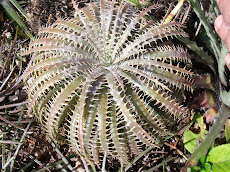
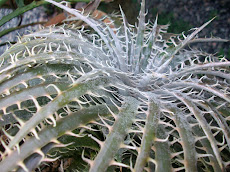

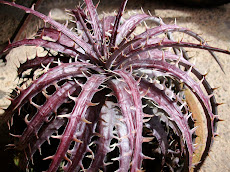

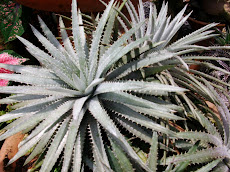

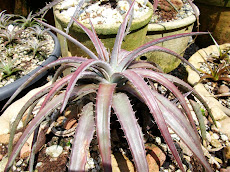
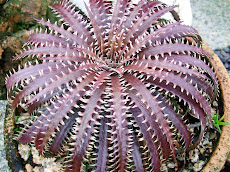


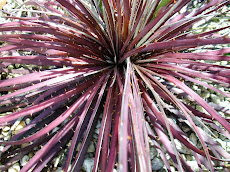
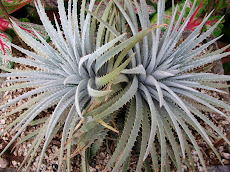
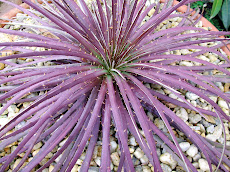

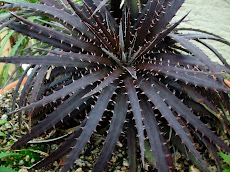
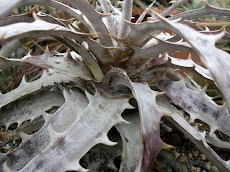

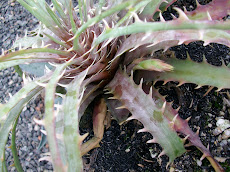

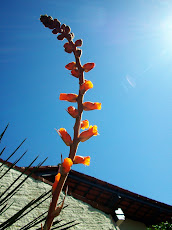


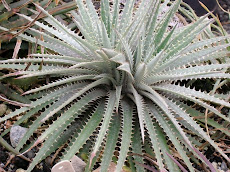
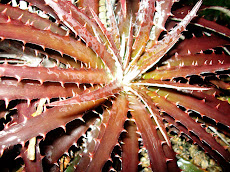
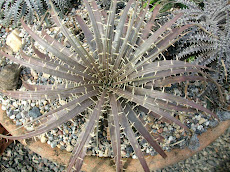


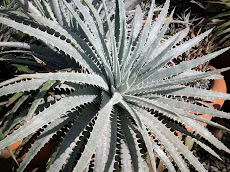



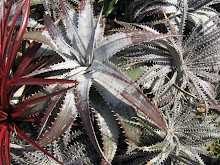
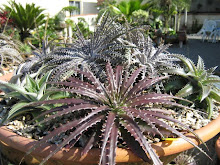
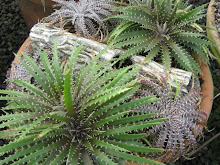
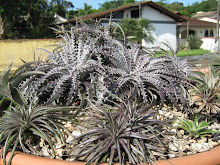


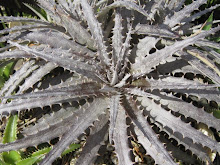
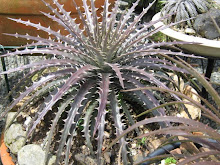
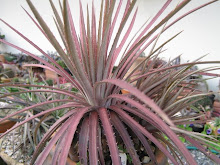

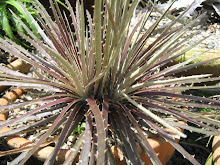
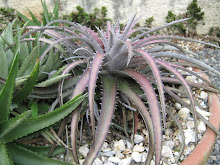
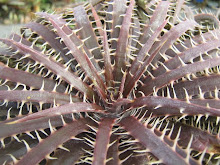



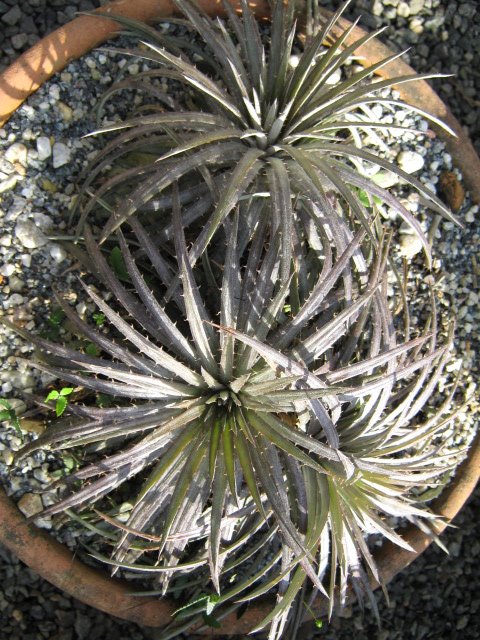
No comments:
Post a Comment